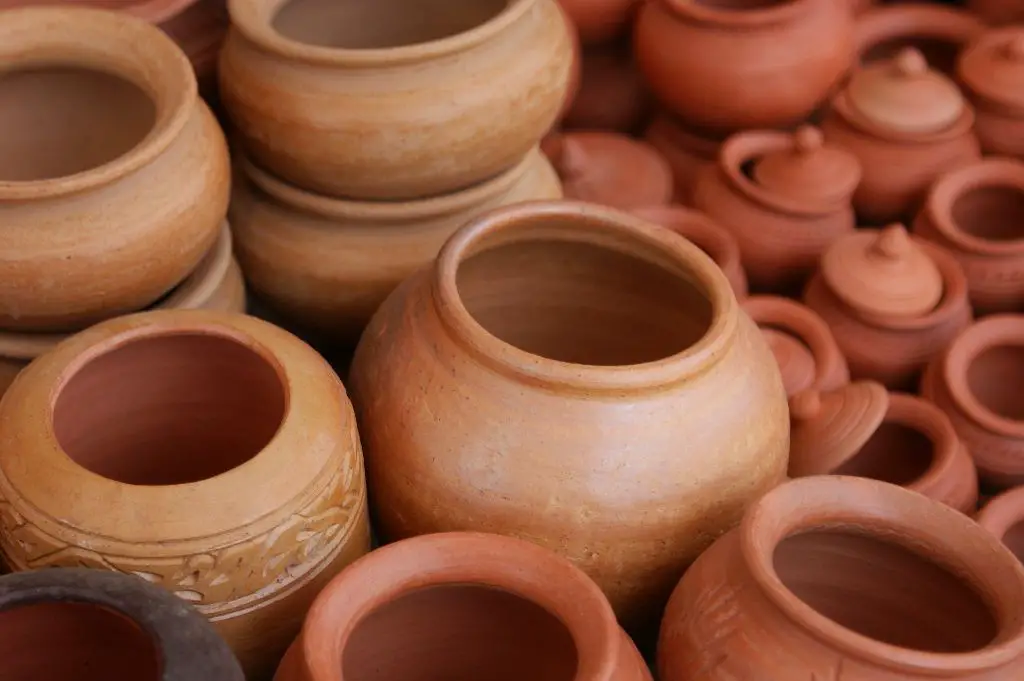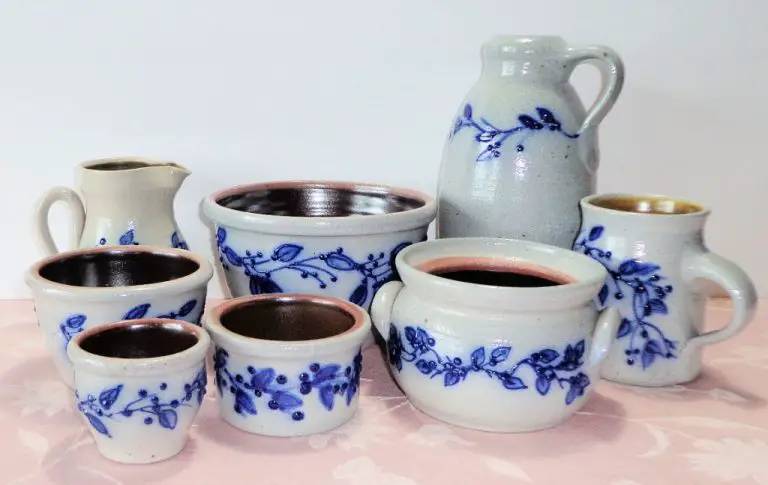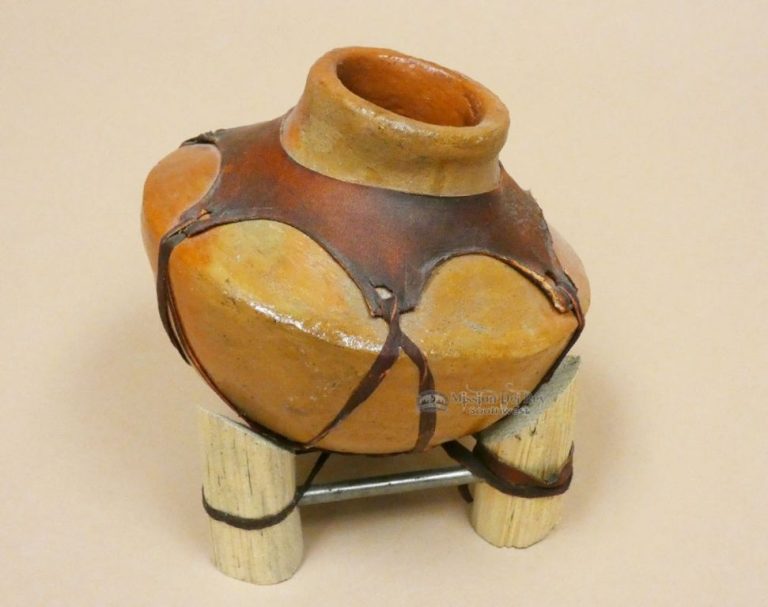What Is An Object Made Of Clay?
What is Clay?
Clay is a fine-grained natural material made up of extremely small particles of hydrous aluminum silicates and other minerals like quartz, mica, feldspar, and calcium carbonate Wikipedia. The key properties of clay are plasticity, shrinkage under firing and under air drying, fineness of grain, and cohesion Encyclopedia Brittanica.
There are several different types of clays, classified based on their mineral composition and properties:
- Kaolinite – The mildest, most common clay type used for ceramics. Fire to whiteness at low temp.
- Ball clay – More plastic, used for modeling and throwing on the wheel.
- Stoneware clay – More coarse, midrange firing temp, for sturdy pots.
- Fire clay – Withstands highest temps, used for kiln bricks and ceramics.
- Earthenware clay – Lower firing range, more porous than stoneware.
History of Clay
Clay has been used by humans for thousands of years. The earliest known use of clay was for making pottery and figurines. Archaeological evidence shows that prehistoric humans were making simple clay vessels as early as 14,000 BC (https://en.wikipedia.org/wiki/Clay). As early humans transitioned from nomadic hunter-gatherers to settled agricultural societies, clay became an important material for crafting storage vessels and cookware. The oldest known fired clay objects include figurines of animals and humans found at Dolní Věstonice in the Czech Republic dating back to 29,000–25,000 BC.
In ancient cultures across the world, clay was an essential material. Some of the earliest pottery has been found in East Asia and the Near East beginning around 18,000 BC. Ancient Mesopotamians, Egyptians, Greeks, Romans, Chinese, and many other civilizations used clay for utilitarian objects like pots, as well as artistic and architectural uses. Clay tablets were an important medium for writing in Mesopotamia and ancient Egypt (Origins of Clay). Bricks made of clay were used to construct buildings and other structures. Clay figurines and sculptures were common as religious and funerary objects.
As civilizations developed more advanced metalworking skills, the importance of clay began to decline. However, clay continued to be an indispensable material for making pottery and ceramics. Traditional pottery methods and styles evolved in many cultures around the world. In modern times, clay remains an important artistic medium, as well as being used in many industrial applications.
Clay Production
Clay is found in many locations around the world. It develops in the ground through the chemical weathering and decomposition of rocks over long periods of time. Clay deposits are typically found in wet, low-lying areas like river valleys, lakes, oceans, and swamps where sediment collects. The major source of clay is sedimentary rock formed by the erosion of igneous rocks like granite.
There are two main ways clay is extracted – open pit mining and underground mining. Open pit mining involves removing shallow deposits by digging large open holes in the ground. Underground mining extracts clay from deeper deposits by digging tunnels and shafts into the earth. After extraction, raw clay goes through a beneficiation process like washing, crushing, and sieving to remove unwanted materials and achieve the desired consistency and plasticity.
Industrial clay processing involves a series of steps. The clay first goes through a blunging process where it is mixed with water to form a slurry. This slurry is then screened, degritted, and filtered to remove impurities. Next, the refined clay slurry goes through one of several drying processes like spray drying, pan drying, air drying, or tunnel drying. This produces a clay powder ready for shipping or further modification depending on its intended use. Throughout processing, clays are often blended to achieve specific properties for the final product.
Source: https://en.wikipedia.org/wiki/Clay
Working with Clay
When working with clay, there are several key steps involved before the finished piece is complete. First, the clay must be prepared and conditioned to make it malleable and ready for use. Some common conditioning techniques include wedging, which manually mixes the clay, and using a pug mill machine to extrude clay into a uniform consistency1.
Once the clay is prepared, the sculpting process begins. Sculptors may hand build pieces by techniques like pinch pots, coiling, slab building, or wheel throwing on a pottery wheel. Clay can be shaped, molded, carved, or joined together using slip. Tools like ribs, loop tools, and sponges help form the clay and create textures1.
After sculpting, clay pieces must dry slowly and evenly to prevent cracking. Dry clay is fragile. Next, the clay undergoes a bisque firing in a kiln, which further dries the clay and makes it hard. Glazes may be applied before a final firing to complete the ceramic piece1.
Types of Clay Objects
Clay has been used to create numerous types of objects throughout history. Three of the most common categories of clay objects are pottery, sculptures, and bricks and tiles.
Pottery refers to objects like vases, bowls, plates, cups and other vessels made of clay that has been shaped while wet then hardened by firing in a kiln. Pottery is one of oldest uses of clay, dating back over 20,000 years. Clay’s plasticity when wet and its transformation into a durable material after firing have made it ideal for crafting containers and vessels for daily use. Major types of pottery include earthenware, stoneware and porcelain.[1]

Clay sculptures encompass a vast range of 3D artworks made by shaping clay. Clay is favored by sculptors due to its malleability and ability to maintain fine detail. Clay sculptures include figurines, busts, reliefs, pottery ornamentation, and much more. Famous clay sculptures include the Terracotta Army statues and Michelangelo’s David.[2]
Clay bricks and roof tiles have been manufactured for millennia as a durable and fireproof building material. The clay is molded into the desired shape, then fired in a kiln to harden. Clay bricks and tiles have been used in structures including homes, temples, palaces and city walls around the world.
Clay in Art
Clay has been used as an artistic medium for thousands of years. Some of the most famous ceramic artists include Pablo Picasso, Peter Voulkos, and Betty Woodman. Picasso experimented with clay sculpture and ceramics extensively from the 1940s through the 1960s, creating many acclaimed pieces like his Four Leaf Clover plate. Voulkos helped establish ceramics as a valid contemporary fine art form with his highly expressionistic and improvisational style. Woodman is known for her inventive, colorful ceramic vessels and wall pieces that blur the line between sculpture and functional pottery.
In contemporary art, many artists use clay to create avant-garde sculpture, installation, and conceptual artworks. For example, Viola Frey’s larger-than-life ceramic figural sculptures explore issues of consumerism, stereotypes, and gender. Other artists like Magdalena Abakanowicz and Jun Kaneko work on an architectural scale with clay to make immersive environments. Regional folk art traditions around the world have incorporated clay into brightly painted figurines, tiles, vessels, and architectural decorations conveying cultural narratives.
Clay remains an extremely versatile, creative, and relevant material within the art world today. Both ceramic craftspeople and fine artists in clay draw on its sculptural qualities as well as its relationship to human civilization and culture.
Clay in Industry
Clay minerals have many industrial applications due to their unique properties. Some of the major industrial uses of clay include:
Construction Materials: Clays are used to make bricks, cement, and mortar. The heat resistance, durability, and hardness of fired clay makes it an ideal construction material. Porous clay is used to make lightweight construction blocks (https://www.sciencedirect.com/science/article/pii/016913179190014Z).
Porcelain Products: Porcelain and white-ware ceramics are made by firing a mixture of kaolin, quartz, and feldspar clays. Porcelain is valued for its whiteness, strength, hardness, and translucency. It is used to make tableware, sanitary-ware, electrical insulators, and dental products (https://www.mdpi.com/topics/IACCM).
Technical Ceramics: Advanced ceramics made from clay minerals have applications in electronics, optics, medicine, energy, transportation, and the environment. These engineered ceramics include electrical insulators, semiconductors, magnets, batteries, filters, catalysts, and much more (https://www.researchgate.net/publication/292519555_Industrial_application_of_clays_and_clay_minerals).
Clay in Culture
Clay has held great cultural significance in societies around the world for thousands of years. Clay objects like pots, figurines, and tiles have been integral parts of rituals, traditions, and daily life. Archaeological excavations have uncovered a wealth of clay artifacts that provide insight into the beliefs and practices of ancient cultures.
In many cultures, clay has ritual purposes and symbolic meaning. Figurines of deities molded from clay have been used in shrines and ceremonies. Clay pots and vessels are often used in cultural and religious rituals for storing sacred materials. The Bible contains many references to clay, including God forming man from clay in Genesis.
Studying clay artifacts is crucial for archaeologists learning about past civilizations. The chemical composition and style of historical clay objects can reveal their age, origin, and purpose. Excavated pottery shows artistic styles and innovations that developed in different cultures over time. Archaeological digs continue to uncover clay tablets, seals, and vessels containing writing that provides information on language, events, and daily life in ancient societies.
Clay Crafts
Clay crafts involve sculpting and shaping clay into decorative or functional objects. Some of the most common techniques for working with clay include:
Pottery Wheel Throwing – This involves centering and shaping clay on a rotating pottery wheel. It allows clay artists to create symmetrical pieces with smooth, even walls. Throwing takes practice to master but allows for an endless variety of shapes like bowls, vases, cups, and pitchers.
Handbuilding Techniques – Handbuilding involves manipulating clay without the use of a pottery wheel. Methods include coil building, pinch pots, and slab construction. Handbuilding allows artists to create unique asymmetrical and sculptural works.
Decorating and Glazing – Clay objects can be decorated in many ways. Incising patterns into leather-hard clay is popular. Slips and engobes add color. After bisque firing, clay can be glazed to create a glassy coating. Glazes come in endless colors and effects like crackles or metallic finishes.
Clay crafts allow endless creativity in both form and decoration. From functional plates and mugs to decorative sculptures, artists utilize clay’s versatility and workability to craft beautiful objects.sources: https://www.pinterest.com/KrissyCano/clay-crafts/, https://abeautifulmess.com/20-clay-craft-projects/
Notable Clay Objects
Some of the most remarkable and influential clay objects throughout history include:
The Terracotta Army – This army of over 8,000 life-size terra cotta figures was buried with the first Emperor of China, Qin Shi Huang, around 210-209 BC to protect him in the afterlife. Discovered in 1974, the incredible detail and workmanship of the individually sculpted soldiers is considered one of the most significant archaeological finds of the 20th century.
The Rosetta Stone – This granodiorite stele with inscriptions in three languages (Egyptian hieroglyphs, Egyptian Demotic script, and Ancient Greek) enabled the deciphering of Egyptian hieroglyphs. Created in 196 BC, it was a pivotal development in the understanding of Egyptian history and culture.
Moche ceramics – The Moche culture flourished on the northern coast of Peru between 100-800 AD. They created vivid portrait vessels depicting deities, warriors, animals, and everyday scenes with fine clay and advanced firing techniques. Moche ceramics provide unparalleled insight into their culture and beliefs.
Other significant clay creations include Greek and Roman figurines and pottery, Chinese porcelain, Native American pottery, Medieval tiles, and modern sculptures and pottery.



